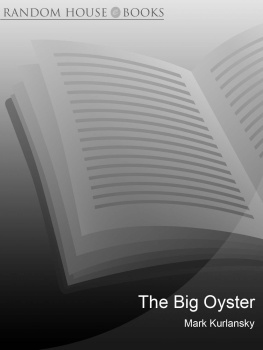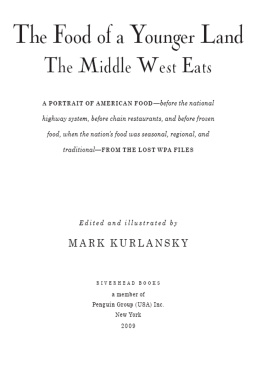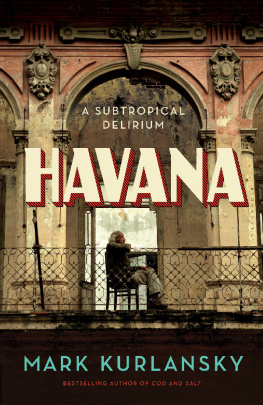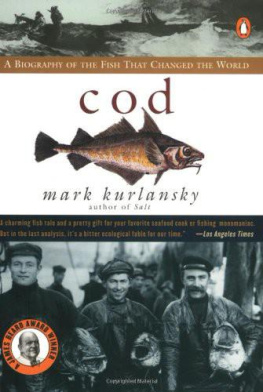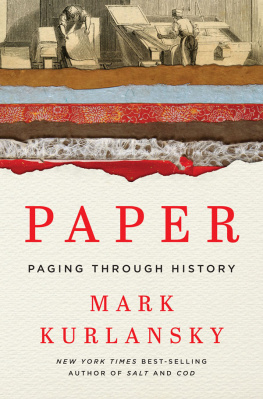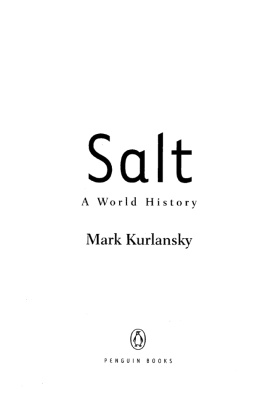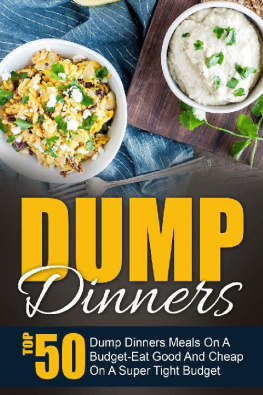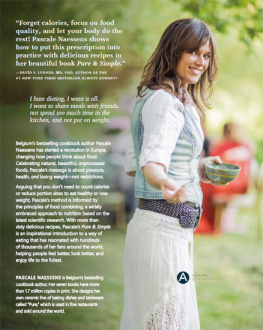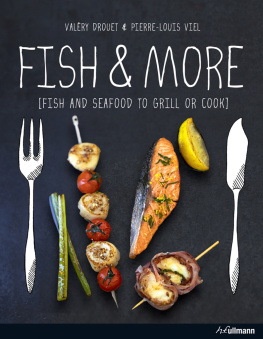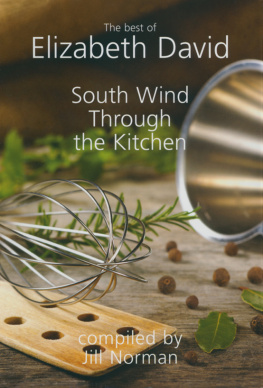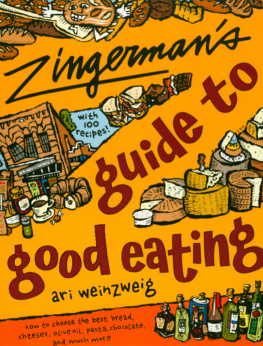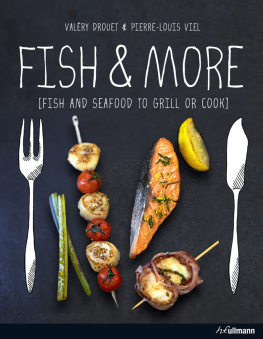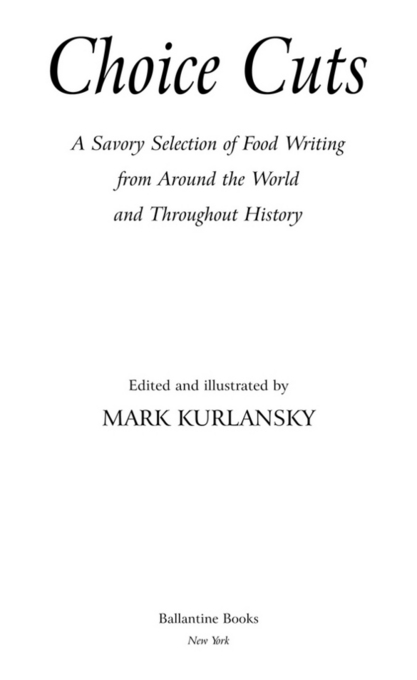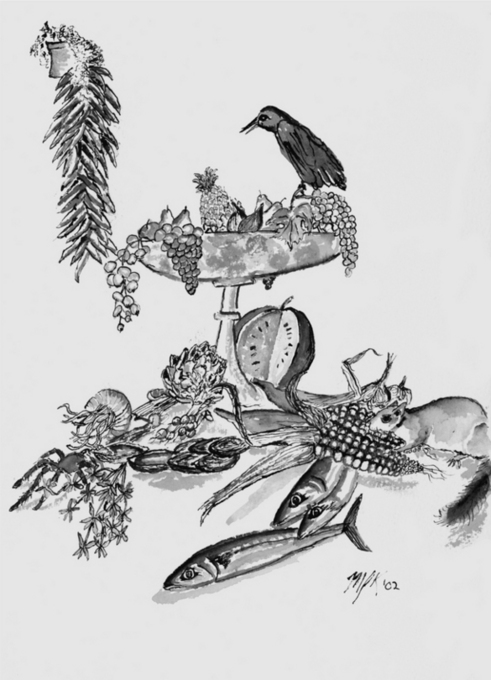
A Ballantine Book
Published by The Ballantine Publishing Group
Copyright 2002 by Mark Kurlansky
All rights reserved under International and Pan-American Copyright
Conventions. Published in the United States by The Ballantine Publishing
Group, a division of Random House, Inc., New York, and simultaneously in
Canada by Random House of Canada Limited, Toronto.
Ballantine and colophon are registered trademarks of Random House, Inc.
Owing to limitations of space, permission acknowledgments can be found on
pp. 469474, which constitute an extension of this copyright page.
www.ballantinebooks.com
Library of Congress Cataloging-in-Publication Data is available from the
publisher upon request.
eISBN: 978-0-345-45858-2
v3.1
My dear boy, when curds are churned,
the finest part rises upward and turns into butter.
So too, dear boy, when food is eaten the choice parts rise
upward and become mind.
C HANDOGYA U PANISHAD
Contents
Alexandre-Balthazar-Laurent Grimod de la Reynire on Gourmets
and Gluttons (1804)
Auguste Escoffier on the Art of Cooking in Modern
Society (1907)
Grimod de la Reynire on Why Blondes Go Better Than Brunettes
with Food (1808)
Karl Friedrich von Rumohr on Emotions to Be Avoided While
Eating (1822)
Marjorie Kinnan Rawlings on Hot Biscuits and Dutch Oven
Rolls (1942)
Anthimus on Chicken, Peacocks, and Other Domestic Poultry
(sixth century A.D. )
Neapolitan Recipe to Make a Cow, Calf, or Stag Look Alive
(fifteenth century)
Catherine E. Beecher and Harriet Beecher Stowe on
Potatoes (1869)
Francisco de Quevedo on the Curse of Tobacco and
Chocolate (1628)
Elizabeth David on the Onward (and Downward) March of the
English Pizza (1977)
Alice B. Toklas on Gertrude Steins Return to
America (1954)
Karl Friedrich von Rumohr on Teaching Germans to
Cook (1822)
INTRODUCTION
Better Than Sex
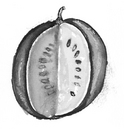
Food, like sex, is a writers great opportunity. It offers material that is both universal and intensely personalsomething that illuminates the nature of humankind but also offers insights into the unique and intimate foibles of an individual.
To write only of the pleasures of eating would be pornographya legitimate use of a writers skills but, from the standpoint of both reader and writer, limited. The writer intuitively wants to explore the broader and more far-reaching effects of food, or for that matter sex, rather than the physical pleasure alone.
In the case of foodnot usually the case with sexthe much sought after physical pleasure involves the acquisition of commodities. Sex only sometimes involves commerce and rarely is impacted by climate or land use. Food is about agriculture, about ecology, about mans relationship with nature, about the climate, about nation-building, cultural struggles, friends and enemies, alliances, wars, religion. It is about memory and tradition and, at times, even about sex. Nothing is more agreeable to look at than a pretty gourmande in full battle-dress. Her lips are soft and moist. wrote the nineteenth-century French food writer Jean Anthelme Brillat-Savarin. And as the twentieth-century American food writer M.F.K. Fisher explained about the erotic power of eating eel: There is a phallic rightness about the whole thing, visual as well as spiritual, which has more to do with the structure of the fish than the possible presence of a mysterious and exotic spice.
Today, our initial expectation of food writing is that it will be about food, but the earliest food writers used food as one tool among many for illuminating broader subjects. The ancient Chinese wrote of food in terms of medicine and alchemy, as well as agriculture and ecology, but rarely simply as food. Food writing was often about land use and, by extension, sometimes about effective and incompetent government. If you do not interfere with the busy season in the fields, then there will be more grain than people can eat; if you do not allow nets with too fine a mesh to be used in large ponds, then there will be more fish and turtles than one can eat, wrote Mencius (372289 B.C. ), a leading disciple of Confucius.
Much of the Old Testament is devoted to explaining what the Hebrew people should and should not eat. It was through this food, this specific diet, that the Hebrews were to define themselves as a distinct people. Food is an integral part of the moral code, the Mosaic law, and historys strongest expression of the often quoted Brillat-Savarin statement Tell me what you eat, and I shall tell you what you are.
In the fifth century B.C. , Herodotus, considered the first historian, would no doubt have agreed. Herodotus began his Histories, and with it the discipline of history, with the simple declaration The purpose is to prevent the traces of human events from being erased by time. Among those traces were the food habits of bygone cultures. He observed how the Egyptians intertwined life and death, preserving their food in salt and curing their dead in much the same way. He described the food and gave recipes for mummification and explained how, after extravagant banquets, a carved wooden replica of a corpse in a coffin would be carried around the room, shown to each reveler with the words Drink and make merry, but look on this, for such shalt thou be when thou art dead.
Perhaps the first true food writer was Archestratus, a poet who lived in the fourth century B.C . in the Grecian colony on what is today Sicily. Little more is known of him than that he wrote a poem called The Life of Luxury, which was characterized by Athenaeus, a later writer:
Archestratus, in his love for pleasures, traveled over every land and sea with precision, in a desire, as it seems to me, to review with care the things of the belly; and imitating the writers of geographical descriptions and voyages, his desire is to set forth everything precisely, wherever the best to eat and the best to drink are to be found.
But among subsequent Greek and Roman writers, food continued to be merely an embellishment to discussions of broader topics. In the second century B.C. , Cato wrote extensively about food in the earliest surviving complete book of Latin prose, but the central subject of this work is agriculture. In the first century A.D. , Pliny the Elder wrote about food, though his principal subject was natural history. So he discussed the seas, their nature, the sea creatures that we eat, and then, without warning, launched into a tirade against eating seafood: But why do I mention these trivial matters when shellfish are the prime cause of the decline of morals and the adaptation of an extravagant lifestyle? Indeed of the whole realm of Nature the sea is in many ways the most harmful to the stomach, with its great variety of dishes and tasty fish.
But what of this extravagant lifestyle that Pliny denounced? The whimsical Martial used food to describe his social life in first-century Rome, both praising and criticizing dinner parties, such as dinner at Cinnas:


